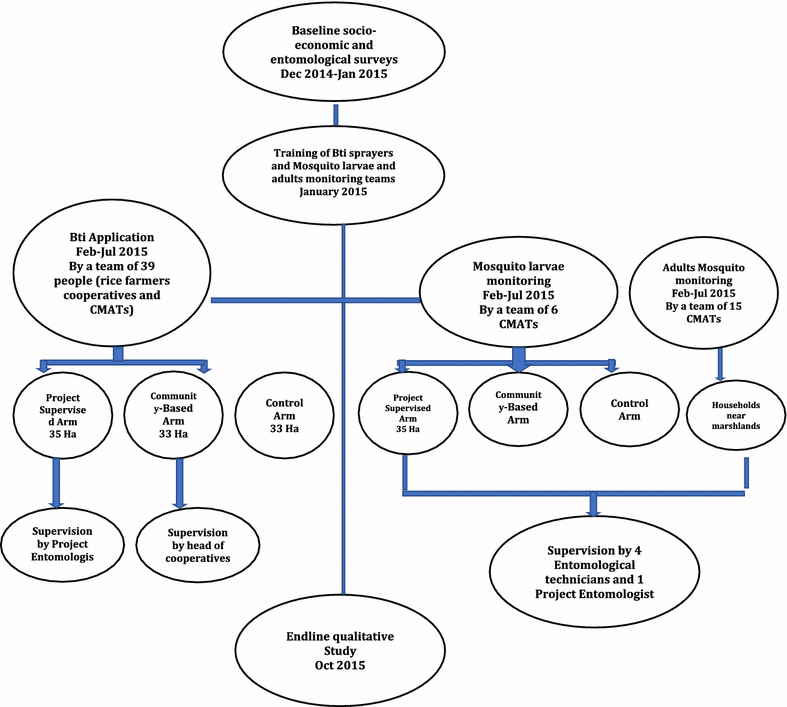Community-based biological control of malaria mosquitoes using Bacillus thuringiensis var. israelensis (Bti) in Rwanda: community awareness, acceptance and participation
- PMID: 28974204
- PMCID: PMC5627396
- DOI: 10.1186/s12936-017-2046-y
Community-based biological control of malaria mosquitoes using Bacillus thuringiensis var. israelensis (Bti) in Rwanda: community awareness, acceptance and participation
Abstract
Background: Targeting the aquatic stages of malaria vectors via larval source management (LSM) in collaboration with local communities could accelerate progress towards malaria elimination when deployed in addition to existing vector control strategies. However, the precise role that communities can assume in implementing such an intervention has not been fully investigated. This study investigated community awareness, acceptance and participation in a study that incorporated the socio-economic and entomological impact of LSM using Bacillus thuringiensis var. israelensis (Bti) in eastern Rwanda, and identified challenges and recommendations for future scale-up.
Methods: The implementation of the community-based LSM intervention took place in Ruhuha, Rwanda, from February to July 2015. The intervention included three arms: control, community-based (CB) and project-supervised (PS). Mixed methods were used to collect baseline and endline socio-economic data in January and October 2015.
Results: A high perceived safety and effectiveness of Bti was reported at the start of the intervention. Being aware of malaria symptoms and perceiving Bti as safe on other living organisms increased the likelihood of community participation through investment of labour time for Bti application. On the other hand, the likelihood for community participation was lower if respondents: (1) perceived rice farming as very profitable; (2) provided more money to the cooperative as a capital; and, (3) were already involved in rice farming for more than 6 years. After 6 months of implementation, an increase in knowledge and skills regarding Bti application was reported. The community perceived a reduction in mosquito density and nuisance biting on treated arms. Main operational, seasonal and geographical challenges included manual application of Bti, long working hours, and need for transportation for reaching the fields. Recommendations were made for future scale-up, including addressing above-mentioned concerns and government adoption of LSM as part of its vector control strategies.
Conclusions: Community awareness and support for LSM increased following Bti application. A high effectiveness of Bti in terms of reduction of mosquito abundance and nuisance biting was perceived. The study confirmed the feasibility of community-based LSM interventions and served as evidence for future scale-up of Bti application and adoption into Rwandan malaria vector control strategies.
Keywords: Acceptance; Bacillus thuringiensis israelensis; Community knowledge; Larval source management; Malaria; Participation; Rwanda.
Figures
References
-
- President’s Malaria Initiative: Rwanda Malaria Operational Plan FY2014. 2014. https://www.pmi.gov/docs/default-source/default-document-library/malaria.... Accessed 22 July 2017.
Publication types
MeSH terms
LinkOut - more resources
Full Text Sources
Other Literature Sources
Medical


